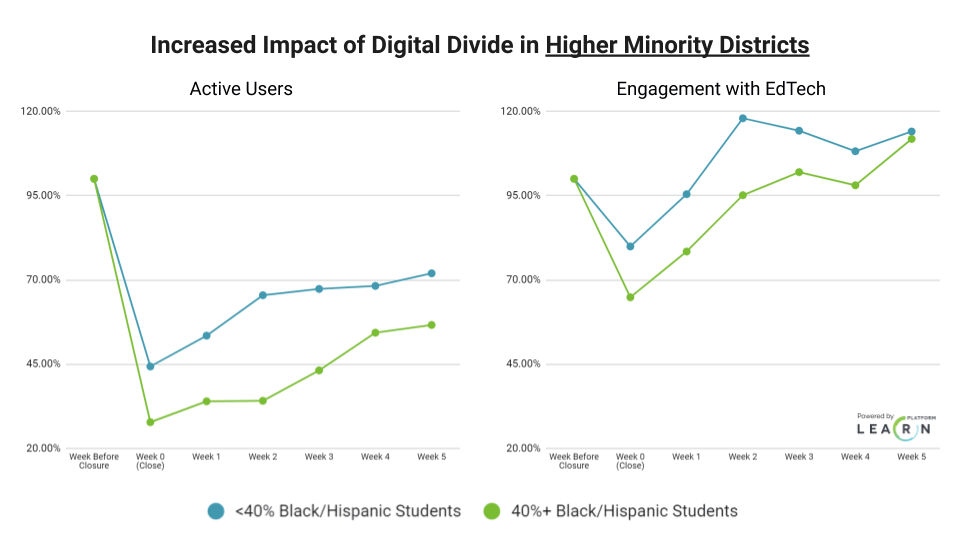Technology-enabled instruction appears likely to remain a key part of the learning ecosystem in primary and secondary schools — even as public health conditions improve and permit a safe return to in-person learning. Gaps in student access to internet-enabled devices that were yawning at the onset of the global pandemic have narrowed, as a result of targeted pandemic relief funding. While additional disparities have become apparent, such as the ‘homework gap‘ (referring to lack of access to reliable high-speed internet at home), creative solutions have recently been mooted to address these concerns.
Educators worldwide have adapted their instructional practices to the context of the global pandemic, integrating technology into their core pedagogy and practice. And early evidence suggests that these adaptations may be bearing fruit, mitigating the most dire forecasts of student learning loss.
Re-examining the digital divide
In light of these developments assessments of the digital divide have begun to evolve. Discussions regarding how to support all learners, including the most vulnerable students, are increasingly focusing on a corollary problem to student access: engagement.
Some have argued that we should shift the discussion away from discussing a digital divide to a digital learning equity gap, where the latter refers to the gap between students who have access to and engage with digital instructional resources versus those who either do not have access or do not engage. This is an important distinction because students can be provided with broad access to online instruction, but active engagement is required to ensure that access translates into effective learning.
A focus on engagement – more precisely, the frequency and quality of interaction students are having in virtual or hybrid learning modalities – illuminates new questions that are central to ensuring educational equity. What does it mean that students “attended” school in a virtual environment? Are there different patterns of engagement across student populations?
Minding the gap
There is growing evidence that students from historically marginalised communities have experienced a disproportionate adverse impact from the past year of school closures. Gaps in engagement during remote or hybrid learning experiences now appear to be a contributing factor to these persistent and widening disparities.
As veteran teacher and technology blogger Larry Ferlazzo noted in a recent blog for EdWeek, ‘there is no secret magical formula for student engagement in distance learning. Teachers need to provide assignments that are meaningful, joyful, relevant, and dynamic.’ Mr. Ferlazzo add: ‘we need to recognize that disparities in student engagement in distance learning correspond to disparities in engagement in real school.’

So how should the engagement gap be addressed? A growing body of research suggests five key considerations:
- Well-designed online learning experiences encourage active and self-directed learning providing opportunities for students to reflect on the progress they have made.
- Another best practice involves combining synchronous and asynchronous learning opportunities, ensuring that during asynchronous learning periods students can proceed at their own pace and have some choice over their learning.
- For English Learners, native language assessments may be an important factor to consider.
- Effective scaffolding is important: learning tasks should be situated within students’ zone of proximal development.
- Finally, there is an emerging consensus that to effectively design and implement highly engaging and impactful learning experiences, teacher training and support is critical.
There is an opportunity for school systems to emerge stronger from the pandemic than they were prior to school closures, but to do so, they must recognise that simply providing access is not enough. To support all learners, engagement must be a key focus of educators and policymakers.
